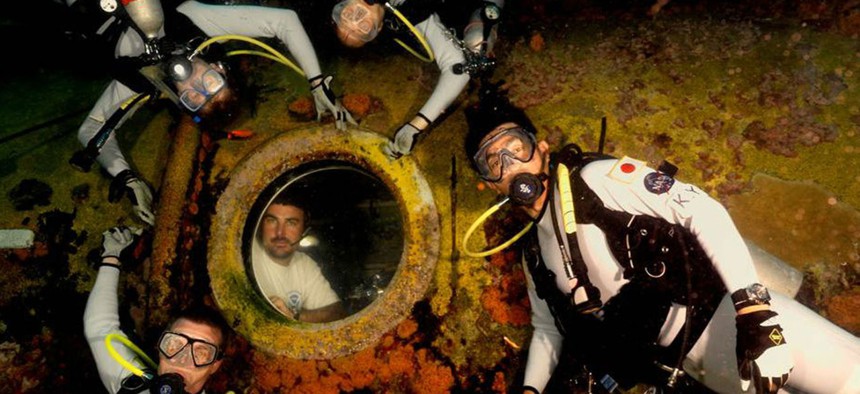NASA is Training Astronauts In an Underwater Station — And Anyone Can Watch Them Online
For 14 days, a team of four "aquanauts" will live in the underwater habitat.
Given that Earth has gravity, it’s difficult for astronauts to learn what it will be like once they’re floating around in the endless expanse of space, in which there is essentially no gravity. The ocean is the next best thing. Not only because moving through water is somewhat similar to weightlessness, but also because it provides an extreme, isolated environment akin to outer space.
Since 2001, NASA has trained astronauts at Aquarius, an underwater research base a few miles off the coast of Key Largo in Florida, as part of the agency’s Extreme Environment Mission Operations program (fittingly shortened to NEEMO). Aquarius, which is operated by Florida International University, is 62 feet (19 meters) deep, and is directly next to a coral reef.
NEEMO Expedition 20 began on Monday, July 20. For 14 days, a team of four “aquanauts” (two from NASA, one from the European Space Agency, and one from the Japan Aerospace Exploration Agency) will live in the underwater habitat, conducting experiments and evaluating techniques needed to prepare for future deep space missions to asteroids and Mars. ESA is supplying a special head-mounted tool that will allow astronauts to read the next step in a procedure without taking their hands or eyes off what they’re doing.
According to NASA, Aquarius is the world’s only undersea research station (clearly they’ve never seen Lost). In 2014, aquatic filmmaker Fabien Cousteau lived there for a month, in honor of his very famous grandfather, Jacques.
The coolest part of all this is that you can watch the scientists in action, live, this very moment. Often they just sit and look ponderously out a very small window. Other times, they fiddle with very complicated-looking gadgets. Sometimes, though, you’ll catch them performing full-blown experiments, including two point-of-view cams from divers outside the station.
Watch here:



